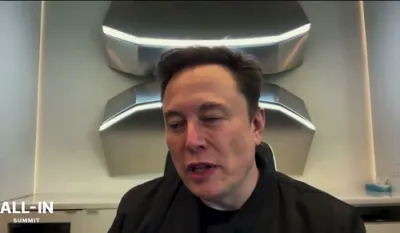אילאן מאסק רעדט וועגן די גוטע אינטערנעט וואס קומט מיט סטארלינק אין די קומענדיגע צוויי יאר
Elon Musk has announced that within two years, smartphones will be able to connect directly to Starlink satellites—eliminating the need for regional carriers and erasing cellular dead zones worldwide.
Speaking at the All-In Summit in September 2025, Musk described the breakthrough as a “complete transformation” in mobile communication, predicting that by 2027, users will be able to “watch videos anywhere on your phone,” thanks to direct-to-cell satellite technology.
The initiative is powered by SpaceX’s $17 billion acquisition of EchoStar’s AWS-4 spectrum earlier this year, a move that secured the bandwidth necessary to integrate Starlink’s low-Earth-orbit (LEO) satellite network with existing mobile devices. Unlike conventional satellite phones, this system allows ordinary smartphones to connect directly to orbiting satellites without additional hardware or apps.
T-Mobile has already begun limited beta testing across select regions in the United States. Current trials support texting and basic messaging, with early success in sustaining uninterrupted video calls and data streams in areas previously unreachable by cellular service. Musk emphasized that global expansion will follow rapidly once U.S. coverage stabilizes.
“This will fundamentally change how people experience connectivity,” Musk said. “Whether you’re in the desert, on a ship, or flying over the Arctic, your phone will work seamlessly.”
Industry analysts describe the development as a potential “carrier disruptor,” challenging the dominance of terrestrial mobile networks. By bypassing traditional infrastructure, SpaceX could position Starlink as both an internet provider and a direct mobile network operator—potentially redrawing the competitive map of global telecommunications.
The project also carries major humanitarian and strategic implications. Experts note that Starlink’s direct-to-cell capability could ensure emergency communication in disaster zones, bolster rural connectivity, and strengthen secure military or governmental communications where infrastructure is limited or damaged.
Still, regulatory hurdles remain. SpaceX must navigate spectrum coordination agreements in dozens of countries, while competitors such as AST SpaceMobile and Lynk Global are racing to deploy similar technologies.
If successful, Musk’s plan could mark the beginning of a post-carrier era—one where global satellite networks replace local towers, offering truly universal, borderless mobile service.


































